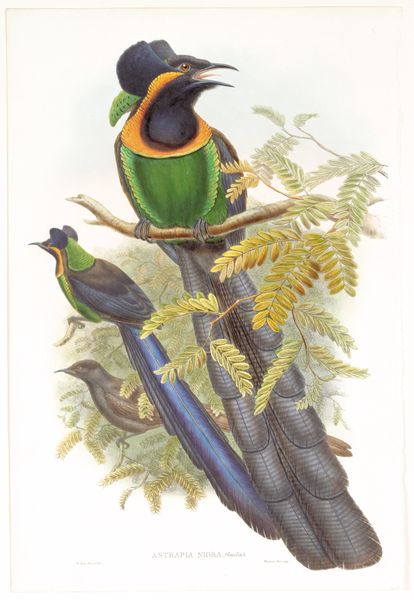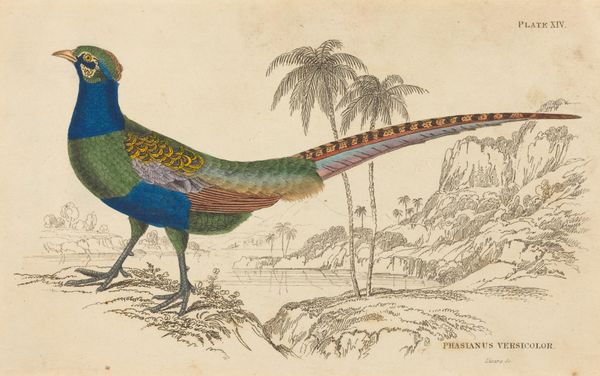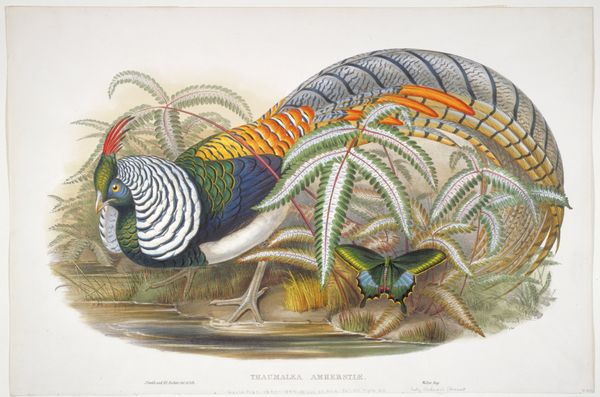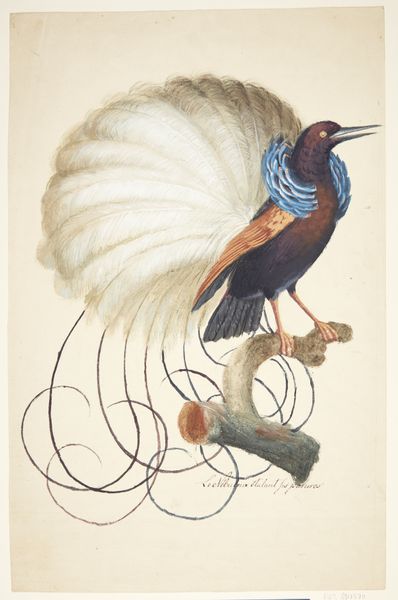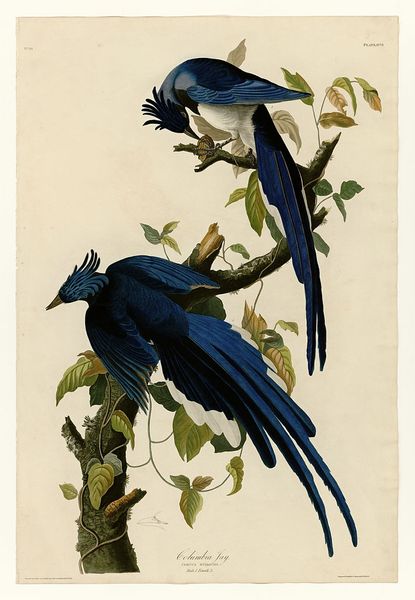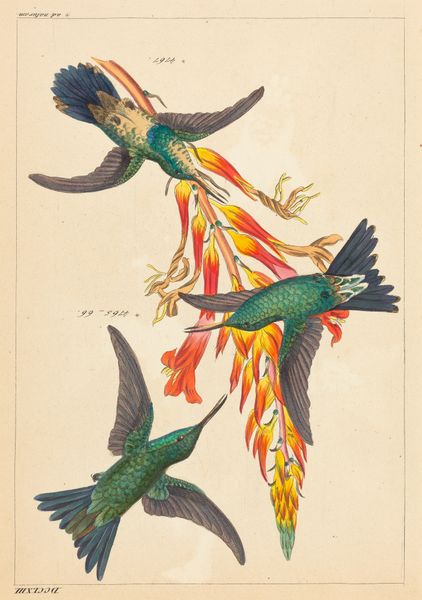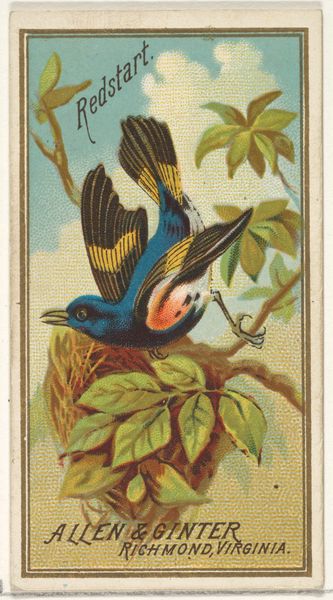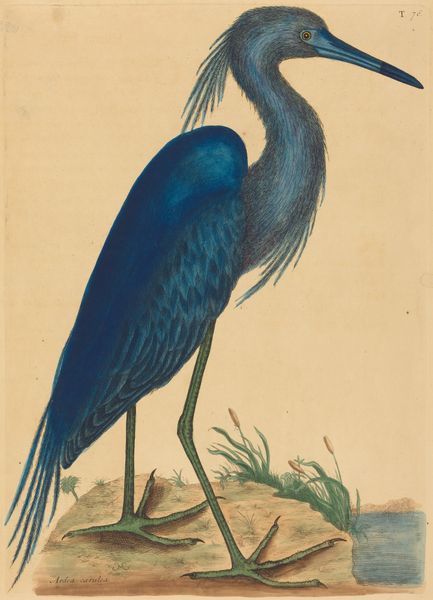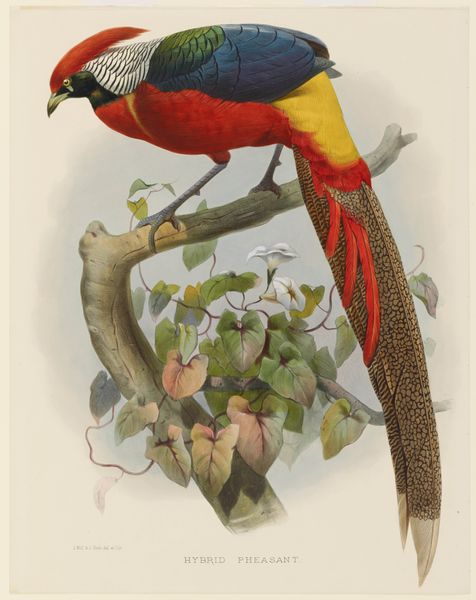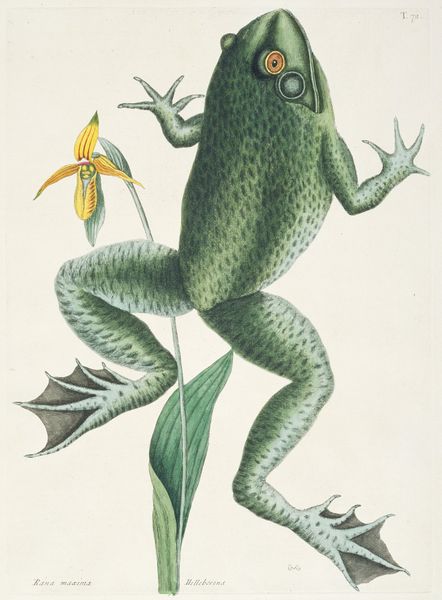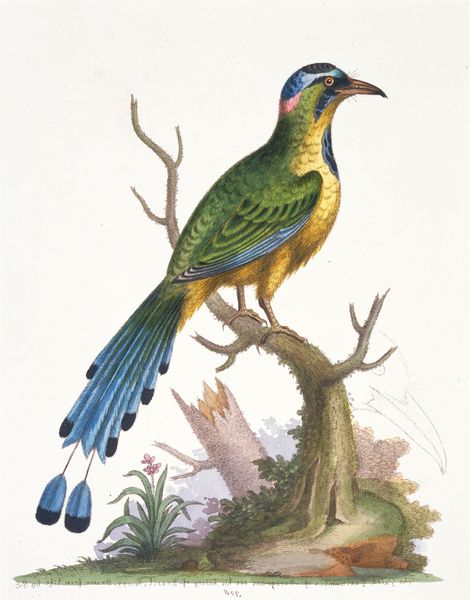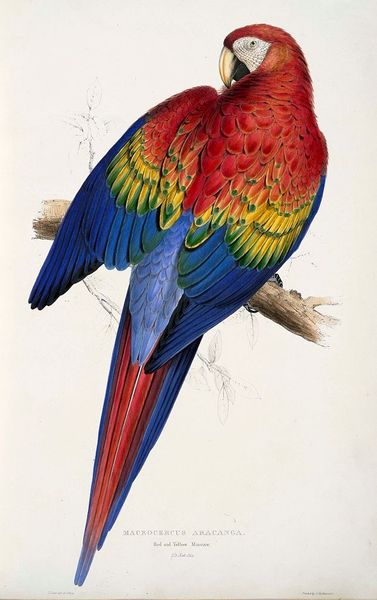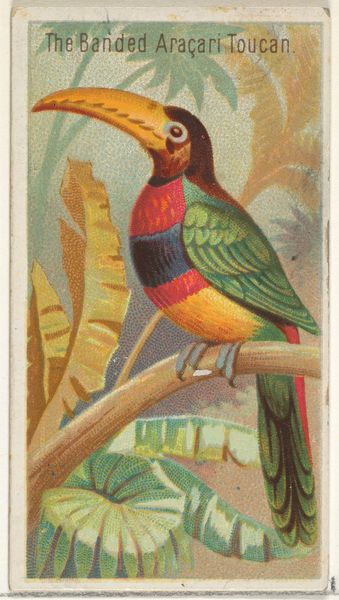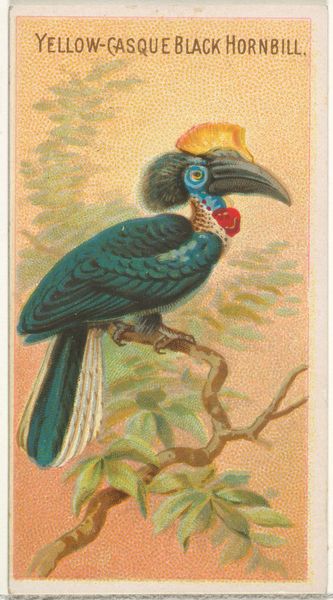
print, watercolor
#
portrait
# print
#
figuration
#
watercolor
#
animal portrait
#
naive art
#
watercolour illustration
#
realism
Copyright: National Gallery of Art: CC0 1.0
W. Hart created this print of the Epimachus speciosus, or Sickle-billed Bird of Paradise, sometime in the second half of the 19th century. Natural history illustrations like this one were not simply scientific records. They were also deeply entangled with the social and political project of European colonialism. Here, the meticulous detail and vibrant colors serve not only to document the bird's existence but also to evoke a sense of wonder and exoticism for a European audience, many of whom would never travel to the bird's native habitat in New Guinea. The bird becomes a symbol of the riches and wonders awaiting discovery and exploitation in far-off lands. To fully understand this image, we might turn to sources documenting the scientific expeditions of the era, as well as studies of the popular fascination with natural history that fueled the market for such prints. By examining these historical contexts, we can begin to understand how art is always embedded in a web of social and institutional relations.
Comments
No comments
Be the first to comment and join the conversation on the ultimate creative platform.
